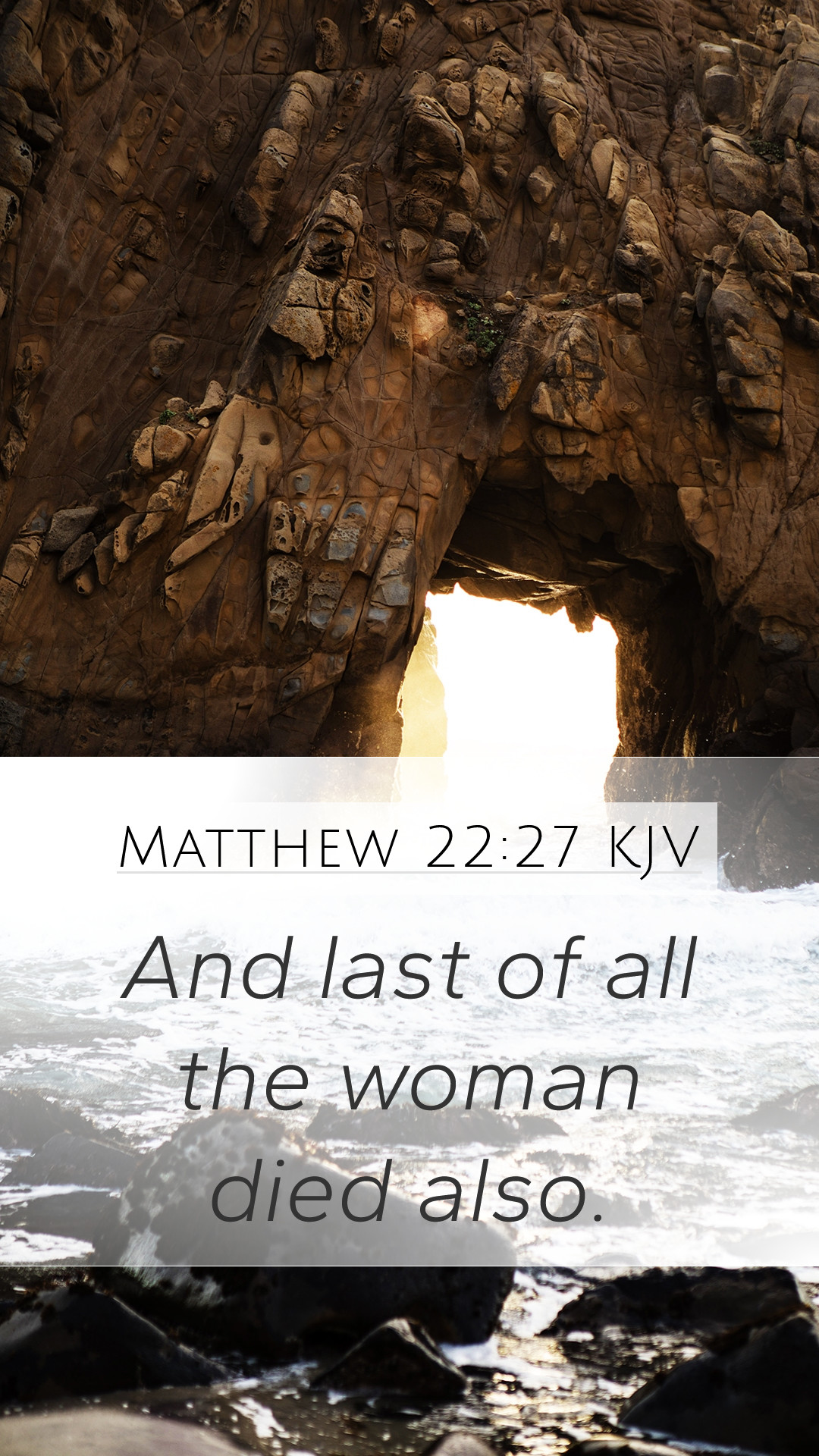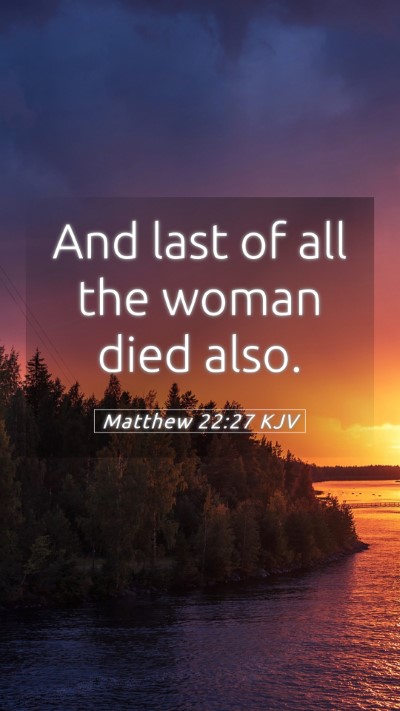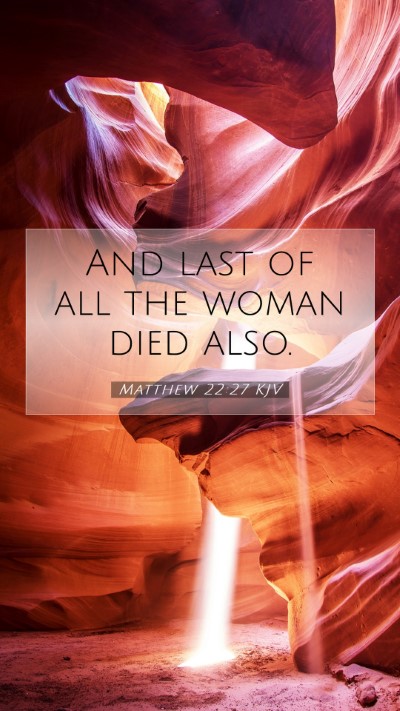Bible Verse Commentary: Matthew 22:27
Matthew 22:27 says: "And last of all the woman died also." This verse comes as part of a larger discussion that Jesus had with the Sadducees regarding the resurrection, highlighting the tensions between different Jewish sects on the matter of life after death.
Understanding the Context
To grasp the meaning of Bible verses like Matthew 22:27, it’s essential to study the historical and religious backdrop. The Sadducees, who were a sect of the Jewish religious leadership, did not believe in resurrection, angels, or spirits. They often posed challenging questions to Jesus to discredit His teachings. This particular verse is part of a hypothetical scenario they present about a woman who marries seven brothers, one after the other, and each time the brother dies, leading to the question of whose wife she shall be in the resurrection.
Verse Breakdown and Analysis
- Historical Context: The question posed by the Sadducees is rooted in Old Testament law (specifically Deuteronomy 25:5-10) regarding levirate marriage, which prescribed that a man should marry his deceased brother's widow to continue the family line.
- Literal Interpretation: The phrase "last of all the woman died also" serves to establish a point of absurdity in the Sadducees’ reasoning, indicating a forced conclusion that the law around such marriages leads to confusion in the supposed afterlife.
- Spiritual Implications: This brings forth the discussion about the resurrection and eternal life, which was a radical teaching contrary to Sadducean beliefs.
Insights from Public Domain Commentaries
Matthew Henry's Commentary
According to Matthew Henry, this verse illustrates the futility of the Sadducees' argument. He emphasizes their misunderstanding of the nature of the resurrection, pointing out that earthly relationships will not adhere in the same way in heaven. Henry’s analysis encourages readers to reflect on the eternal perspective rather than temporal concerns.
Albert Barnes' Notes
Barnes elaborates on the intention behind the Sadducees' question, asserting that they were attempting to trap Jesus in a logical dilemma. He notes that despite their cleverness, they reveal their ignorance about the afterlife by underestimating God's power to transform realities beyond human comprehension.
Adam Clarke's Commentary
Clarke views this verse as a crucial moment to affirm the doctrine of resurrection. He posits that the mention of the woman’s death serves to reinforce the finality of earthly existence, contrasting it with the promise of life after death. Clarke's insights offer a nuanced interpretation that encourages deeper inquiry into Bible study insights.
Application for Believers
As we reflect on Matthew 22:27, believers are encouraged to consider:
- The **reality of resurrection** and life beyond this world.
- How to **apply biblical teachings** regarding relationships in light of eternity.
- The importance of understanding **Scripture** in its full context to avoid misinterpretations.
Related Bible Verses
For further Bible verse explanations, consider these cross-references:
- Luke 20:34-36 - Jesus clarifies the nature of life after resurrection.
- 1 Corinthians 15:12-22 - Paul elaborates on the resurrection of the dead.
- Philippians 3:20-21 - A discussion of believers' transformation in the resurrection.
Conclusion
This examination of Matthew 22:27 offers a lens through which to explore not only its literal meaning but also its profound implications for faith in life after death. Through Bible study tools and resources, believers can enhance their understanding of Scripture and grow in their spiritual journeys by contemplating such verses in a broader biblical context.


